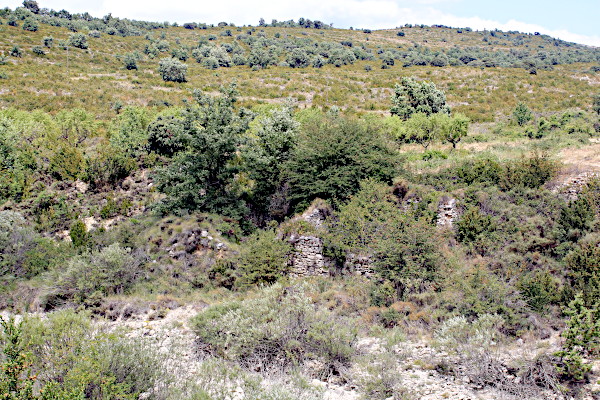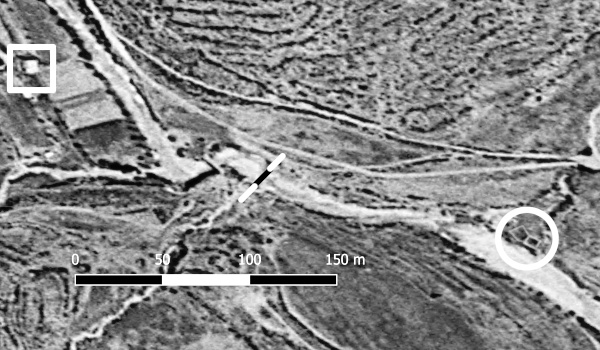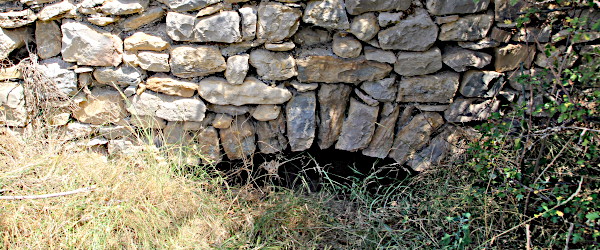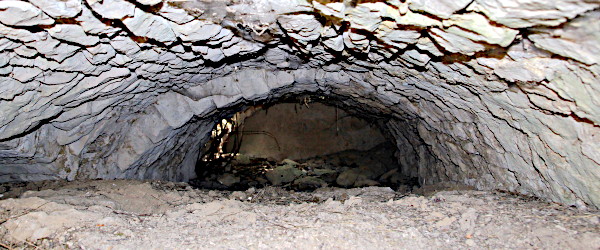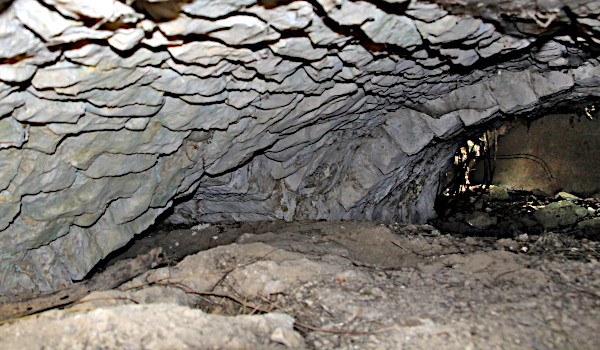Mills in Alto Aragón — molino harinero
Paúles de Sarsa
Paúles de Sarsa is a nucleus of Sarsa de Surta in the
Sobrarbe municipality. The mill is probably best approached walking in the riverbed starting at the
bridge near the
mill of Pedro Buil. From
L'Ainsa take the A-2205 towards
Guaso and
Bárcabo. Past
Arcusa (about 20 km) turn right where
Sarsa and the Parque Natural de Guara are signposted. Follow the narrow road until you reach the
small parking space with some information panels about the
mill of Pedro Buil.
Step into the river (usually dry) and walk back to Paúles. You'll first walk below the bridge and from there walk about 40m for the
traces of the old dam and about 200m for the remains of the mill, known as the
molino Ramón.
Pictures: 26.vii.2021
This is a mill with an eventful history.
Some points of its history can be found dispersed in the article by Javier Valenzuela (
†) about the
mill of Pedro Buil.
Originally the mill of casa Ramón (already mentioned in documents from the 16th century) was situated North of Sarsa de Surta on the road towards Las Bellostas.
Later on the mill was relocated to the place were its remains (1) can still be found, between the mill of Pedro Buil and Paúles.
There was no bridge back then. This mill was destroyed by a flood after two weeks of heavy rains in October 1907.
After this floods the people of casa Ramón, instead of repairing the old mill,
wanted to build a new one just a few dozen meters from Pedro Buil's, more or less where we find the bridge now.
It is easy to understand that Pedro Buil was not enthusiastic about this plan and he asked authorization to build a bridge over the río Vero at the same spot
were casa Ramón intended to erect its new mill. The bridge was built in 1917 and with this casa Ramon's plans fell through.
No new mill was built.
The aerial view (2) shows the molino Ramón consisting of
two parts. The smallest element coincides with what remains today. As no traces have survived it is not clear what the second, bigger, element
may have been. Maybe the walls of a mill pond. The only thing that has been well preserved to this day is the wheelhouse (3-5).
Its roof consists of two different barrel vaults fitted together (4). It is noteworthy that a second vault (5) is visible in the side wall, running parallel to the river. Could this mill have had two different configurations over the years? After all, the mill is located at the confluence of the río Vero and a tributary, and both could have supplied water.
Read more about this mill:
† Valenzuela Recia, Javier
— 2001 — Museo Etnológico Molino de Pedro Buil. —
Tierra Bucho (6)11: p. 3–33.
‡ Vanhercke, L. & Anselin, A. — 2021
— A la búsqueda de Molinos. Casi completamente desaparecidos — el Gurrión xi.2021, N° 165, p57-60 —
Download PDF


